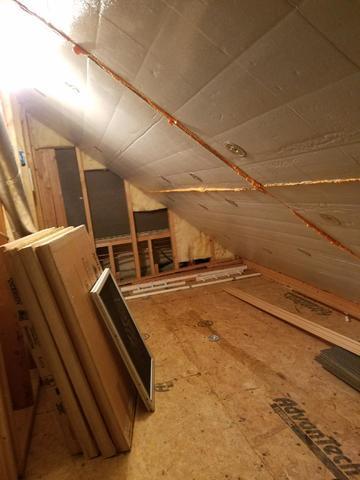What to Know About Knee Walls
If insulating your attic is your latest home improvement project, you will likely see the term “knee wall” come up a few times. What is a knee wall, and why is it important when it comes to supporting your attic? Knee walls support the roof and rafters of the attic. Like way the human knee bends is similar to the structure of an attic knee wall. If the attic is framed with rafters and is unfinished, the room will have a triangular shape.
By definition, a knee wall is a short wall (under 3 feet) that is used to provide support to the rafters of the attic. Usually, they can be found in older homes where the top floor is an attic, but the space is usable, i.e. it’s been converted to a livable room. The knee wall blocks off the space that is too small, due to a sloping roof, to use for anything in the room.

While knee walls are an important part of the structure of the attic, they actually contribute to uncomfortable home conditions and lack of energy efficiency.
Issues with knee walls:
Knee walls tend to be overlooked as an insulation destination during construction. This means that the space behind the knee wall – the unfinished space that we don’t see – is actually letting unconditioned air into the seemingly finished and conditioned room. This can make your floors too hot in the summer and too cold in the winter. It also adds to your energy bills because you’re spending more to make your home comfortable and livable.
To see how much energy and air is being lost from your knee wall, schedule a home energy audit with Comfenergy. Our specialists are able to diagnose what kind of insulation solution or air sealing solution is best to keep your home performing at its best.

